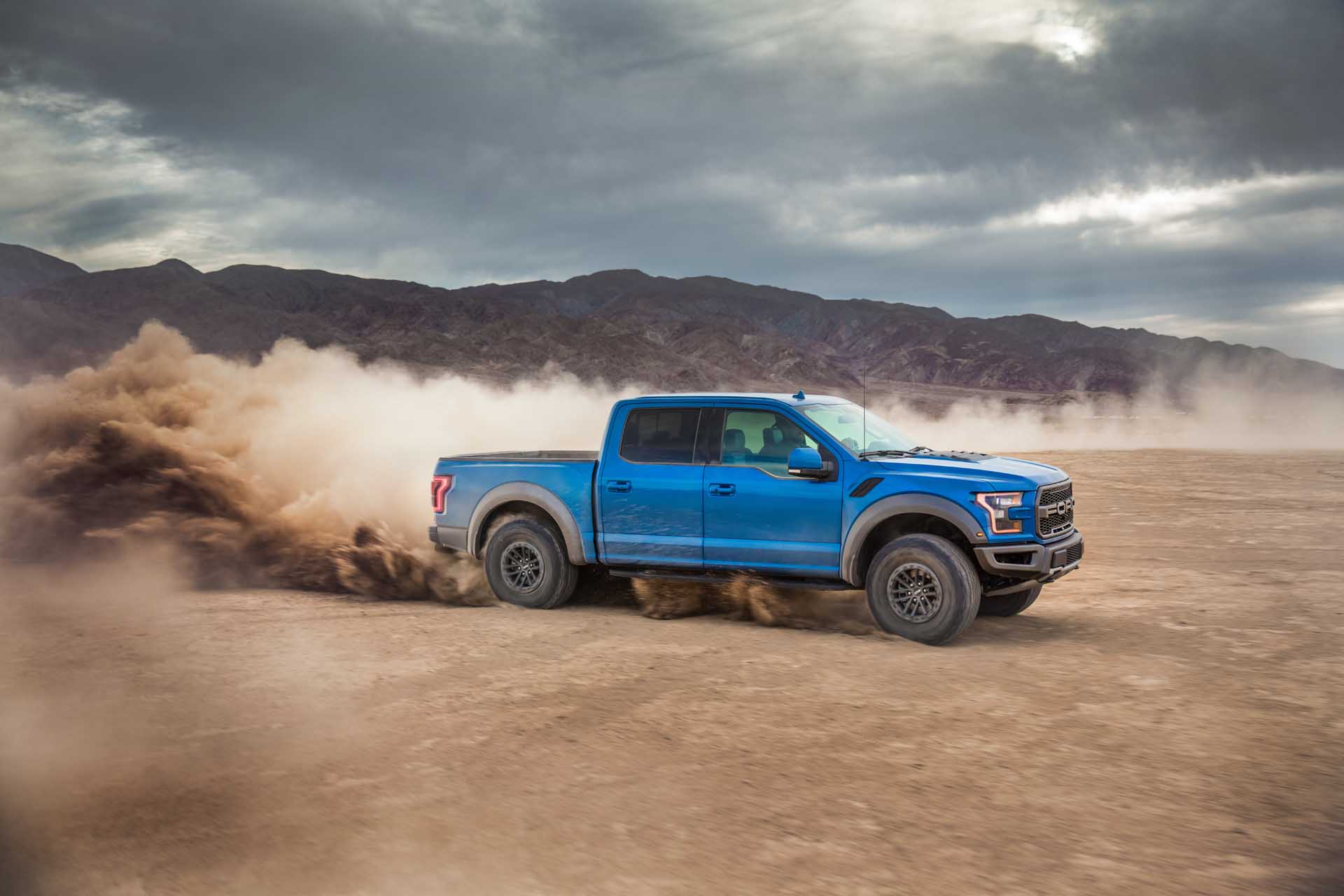
The Ford F-150 has just about every digit covered. Available with V-6 or V-8 power, 6- or 10-speed automatic transmissions, two- or four-wheel drive, it’s the truck’s singular capability that helps it stand apart.
Starting from an average score, the F-150 gets points above average for its drivetrains that are not only good, they’re great, and its capability. It loses one for ponderous handling that’s endemic to anything that weighs nearly three tons—giraffes probably handle just the same if we tested them. The F-150 is a 7 on our performance scale.
F-150 power
The base F-150 is powered by a 3.3-liter V-6 that was added recently and replaced an aging 3.5-liter V-6. The 3.3-liter, though new, will still be a relative rarity among average buyers—it’s only fitted to the base XL and XLT trucks, and even then, it’s a short throw to a more powerful engine with better towing and hauling capabilities.
The 290-hp 3.3-liter V-6 has direct injection for better fuel economy and the EPA rates it up to 22 mph combined, even if it’s saddled with a 6-speed automatic transmission. It’s fine, even as a work-spec truck, with quiet acceleration and has good low-end torque.
Most shoppers will opt for the 2.7-liter turbo V-6 that’s rated at 325 hp and 400 lb-ft. It’s mated to a 10-speed automatic transmission and effortlessly tugs up to 8,500 pounds hooked to the rear bumper or up to 2,500 pounds in the bed. Despite having as many gears as a Schwinn, the 10-speed automatic easily slips down a cog or four without notice, and the busy automatic transmission helps the 2.7-liter rate up to 20 mpg combined when equipped with four-wheel drive. It’s the powertrain that we’d recommend, and recommend driving last if shoppers are considering multiple engines—the 2.7-liter dispatches with many V-8s from yesteryear.
The only V-8 left is a reliable 5.0-liter unit that’s standard in most top trims, even if it’s surpassed by the turbo V-6 engines in performance and towing. The V-8 thumps out 395 hp and 400 lb-ft, and carries more than 3,200 pounds in the bed or 11,600 pounds attached to the rear bumper in certain configurations when properly equipped. The V-8 is like shaking hands with the F-150 we all drove at some point—and you can set your watch to its mileage returns in the high teens, combined—and we concede that traditional pickup buyers clutch a V-8 like a blanket. The V-8 is warm and welcoming, but there are better options available.
From there, it’s all turbo V-6 power, all the time.
The 3.5-liter turbo V-6 makes 375 hp and 470 lb-ft in most versions, enough pull to sate our reflexes for a V-8 lump in a pickup. The turbo V-6 is rated to haul more than 3,200 pounds in the bed and tow up to 13,000 pounds when properly equipped.
A higher output 3.5-liter turbo V-6 is standard in the F-150 Limited and Raptor pickups. That engine makes 450 hp and 510 lb-ft and is rated to tow up to 11,100 pounds or haul 1,520 pounds in the bed in rear-drive F-150 Limited trucks. Aside from the power bump, the high-output V-6 performs like the big V-8 it replaces in comfort, torque, and drivability. It can whistle away from traffic effortlessly at stoplights, launching the heavy truck in seconds up to highway speeds. Fuel economy in the turbo V-6 engines can swing wildly with heavy feet, or on long slogs, but its power is prolific.
The last stop for the F-150 for now is an optional turbodiesel V-6 that doesn’t haul or tow any more than the rest of the engine lineup (it tows up to 11,400 pounds and can carry up to 1,900 pounds in the bed) and doesn’t return significantly better fuel economy either. It’s for drivers looking for long ranges on long drives, and is refined—albeit much more expensive. It’s rated at 250 hp and 440 lb-ft.
F-150 ride and handling
Ford’s diet of lightweight materials on a steel frame has helped it shed weight, although it still handles like a tall, heavy truck.
The F-150 uses electric power steering and a coilover front end with a Hotchkiss solid rear axle on leaf springs with outboard shocks. Ford doesn’t use air springs or adaptive shocks, so the ride can bound and pitch at higher speeds compared to crosstown rivals. Low- to medium-speed rides are better suited to the F-150 (and most trucks), but stability control systems when a trailer is attached can keep the F-150 composed while hauling.
The Raptor is its own animal altogether—literally and figuratively. It’s ready for high-speed off-roading, on dunes or in a forest, at any speed. For more on the Raptor read our colleagues’ reports at MotorAuthority.com.
Review continues below
0 Kommentarer